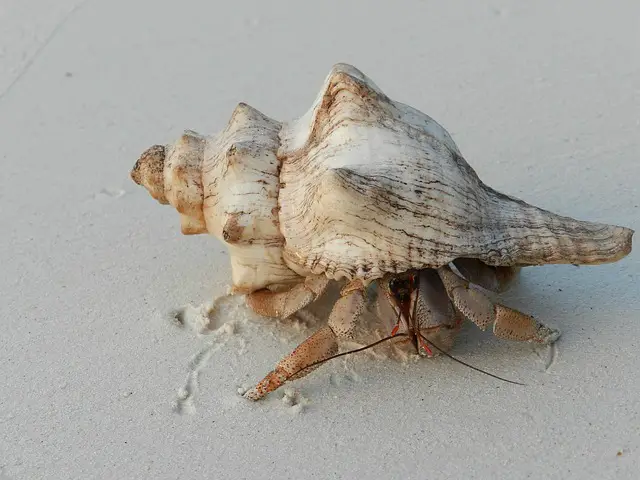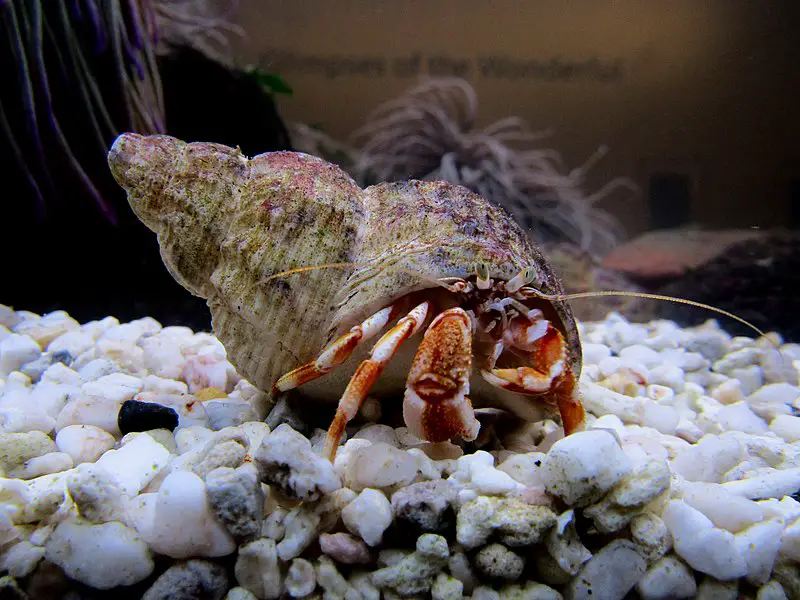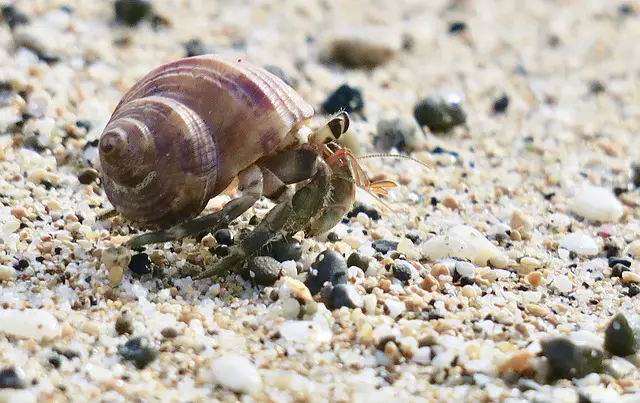Hermit crabs live in warm places in the wild. People who love pets often think about the best heating options. They wonder if hermit crabs need a heat lamp or if other heating methods are good, too. Learning about heat lamps can help create the perfect home for these exciting animals.
Generally, hermit crabs do not need traditional heat lamps. These lamps often produce intense, focused light and heat, which can overheat small enclosures and harm hermit crabs. However, there are a few situations where indirect warmth might be beneficial:
- Very Cold Environments: If the room temperature consistently falls below 70°F, a low-wattage heat source like a CHE or under-tank heat mat can be helpful.
- Certain Species: Some land hermit crab species may enjoy occasional basking in a less intense warm spot.

Key Takeaways
- Assess the need for a heat lamp based on the specific requirements of hermit crabs.
- Explore various heating options to ensure a warm and stable habitat.
- Understand the role of heating methods in maintaining health and wellness for hermit crabs.
- Consider the type of heat lamp and its impact on the crabitat environment.
- Balance temperature control with safety and energy efficiency in mind.
Temperature and Humidity: The Key to Comfort
When we care for hermit crabs, it’s key to get the temperature and humidity right. Maintaining a balanced climate in their habitat is crucial for their health.
Lighting for Your Hermit Crab Habitat
Hermit crabs benefit from a well-regulated environment, including both temperature and a natural day/night cycle. Here are the best lighting options to consider:
- Under-Tank Heating Mats: These mats are a great primary heat source for hermit crabs. Choose a mat that covers 1/3 to 1/2 of the tank floor and has a thermostat for accurate temperature control. Place it on the side or back of the tank to create a temperature gradient so your crabs can self-regulate.
- Ceramic Heat Emitters (CHE): CHEs produce infrared heat, which helps to raise the ambient temperature of the enclosure without emitting harsh visible light. They are a good option if the room is consistently chilly, or for large enclosures where under-tank heaters might not suffice. Make sure to use a dome fixture with a temperature regulator to prevent overheating.
- Low-Wattage LED Bulbs: LEDs emit minimal heat but provide general illumination. This helps establish a day/night cycle which is beneficial for hermit crab health. Choose a low-wattage “cool white” bulb to mimic natural daylight.
Important Considerations
- Species: Some land hermit crab species may enjoy occasional basking. If you notice your crabs consistently gravitating towards warmer spots, a very low-wattage incandescent bulb on a timer may be beneficial.
- Monitoring: Regardless of setup, always monitor temperatures throughout your tank with reliable thermometers. Hermit crabs are sensitive to extreme temperatures.
- Safety: Keep electrical cords out of reach, and always use fixtures rated for the intended bulb type.
Ideal Ranges
Hermit crabs do best in warm areas. The ideal range is 70-80°F (21-27°C). They also need humidity between 70-85%, which allows them to breathe well.
Use hygrometers and thermometers to keep conditions perfect. Heating mats, humidifiers, or misting also help. This keeps your crab happy and healthy.
Remember, some crabs might need slightly warmer or cooler places. However, the guidelines we discussed work for most pet crabs.
Land Hermit Crabs vs. Aquatic Hermit Crabs
Getting a hermit crab?
You need to know there are two types: land hermit crabs and aquatic hermit crabs. Each requires specific care based on where they come from. We’ll look into their differences and what they need to be happy.
Species Differences
Land and aquatic hermit crabs love to find and live in empty shells. But what they need to live well is not the same. Knowing these needs is key to the health of your crabs.
| Characteristic | Land Hermit Crabs | Aquatic Hermit Crabs |
|---|---|---|
| Habitat requirement | Primarily terrestrial with access to both freshwater and saltwater | Mostly aquatic, requiring a well-maintained marine environment |
| Shell preference | Generally favor lighter shells as they are easier to transport on land | Often choose heavier shells that can stabilize them in water currents |
| Dietary habits | Opportunistic feeders that eat a variety of plant and animal matter | Typically consume algae, plankton, and detritus found in the water |
| Water needs | Need a balance of freshwater for drinking and saltwater for bathing | Constant access to saltwater that matches their natural osmotic balance |
| Size range | Sizes vary, but they are often larger due to less predation risk on land | Tend to be smaller, fitting into the nooks and crannies of the marine ecosystem |
Getting the right home for your hermit crabs is crucial. It depends on whether they prefer land or water. Knowing about them, whether you like the ones that climb or the ones from the water, is key.
Caring right for your land or aquatic hermit crabs helps them show their true colors, allowing you to enjoy the beauty of hermit crab life even more.
Creating the Perfect Hermit Crab Habitat
Creating a hermit crab habitat requires understanding tank size and space requirements. These elements are key to their health and growth, and properly sized tanks reflect their natural environments well.
Tank Size
Hermit crabs need more space than it may initially seem. A minimum of a 10-gallon tank is essential for two small or medium crabs. Larger groups, or bigger crab species, will require even more room. This allows for natural behaviors and reduces the likelihood of aggression.

Here’s a table showing tank sizes based on the number of hermit crabs:
| Number of Crabs | Minimum Tank Size | Recommended Tank Size |
|---|---|---|
| 2 | 10 gallons | 15 gallons |
| 4 | 20 gallons | 30 gallons |
| 6 | 30 gallons | 45 gallons |
| 8+ | 40+ gallons | 55+ gallons |
Bigger habitats are not only more fun for hermit crabs but also easier to maintain. They keep temperature and humidity steady. They also have enough room for burrowing, large water dishes, and climbing areas, which better meets hermit crabs’ needs.Remember, more space is always better. Your hermit crabs will be healthier and happier.
Feeding Your Hermit Crabs
A good hermit crab diet helps them stay healthy and full of energy. It might seem hard to offer a nutritional variety at first. But with simple feeding tips, giving them a great meal becomes easy.

Nutritional Variety
Giving a mix of different foods ensures your crabs get what they need. You should combine store-bought food, fresh stuff, and extra proteins. This will make your crab happy and healthy.
| Food Type | Benefits | Examples |
|---|---|---|
| Commercial Foods | Easy to feed, fortified with vitamins and minerals | Specialized hermit crab pellets, granules |
| Proteins | Essential for growth and shell health | Chopped meats, shrimp, fish flakes |
| Calcium Sources | Crucial for exoskeleton strength | Crushed eggshells, cuttlebone, oyster shells |
| Fruits & Vegetables | Provides vitamins, enhances hydration | Apples, mangos, spinach, carrots |
Check to make sure the food is safe for hermit crabs. Serve small amounts to avoid waste and spoiling in their homes.
Understanding Molting
Watching a hermit crab molt is very interesting. Molting lets the crab change its old shell for a new one. This process starts with the crab filling up with water.
As pet owners, it’s important to know when your crab is molting. Before molting, the crab might seem tired and eat less. It might also hide. This is when they need a safe and comfy place to molt.

The Molting Process
The time it takes for a hermit crab to molt can differ, from a few weeks to months. After molting, the crab eats its old shell, which gives it the nutrients needed for its new shell.
Before molting, the crab drinks lots of water, which makes it easier to shed its old shell. After shedding, the crab hides until its new shell hardens. Humidity is very important during this time.
| Stage | Description | Owner’s Role |
|---|---|---|
| Pre-Molt | Crab consumes shed exoskeleton for nutrients and wait for the new skeleton to harden. | Ensure a stress-free environment and avoid unnecessary handling. |
| Molting | Crab sheds its exoskeleton and becomes immobile while hiding. | Provide adequate substrate for burying and moist, warm conditions to aid exoskeleton shedding. |
| Post-Molt | Crab consumes shed exoskeleton for nutrients and waits for the new skeleton to harden. | Offer foods rich in calcium and proteins to support new exoskeleton development. |
Molting is natural but stresses crabs. Pet owners should keep their habitat quiet and just right. The right temperature and humidity help a lot. Paying attention helps your crab grow healthy and happy.
Hermit Crab Behavior and Handling
Knowing how hermit crabs act is key. This helps us handle them safely. We can see if they are scared or just curious, which makes them less stressed.
Pinching vs. Aggression
Crabs pinch, but it’s not because they’re mean. They might be scared or just looking around. Knowing why they pinch helps us avoid it. This keeps both crabs and us happy.
We can tell if a pinch is curious or mean by watching them. How they act and the situation tells us what they feel.
| Behavior | Description | Handling Suggestions |
|---|---|---|
| Exploratory Pinching | A stronger pinch might occur if a hermit crab is startled or feels threatened. | Allow hermit crab time to become familiar with their surroundings and your presence before attempting to handle them. |
| Defensive Pinching | Repeated pinching, potentially accompanied by lunging or chasing, is often a sign of stress or discomfort. | Move slowly and speak softly when near the crab to prevent startling it. Avoid sudden movements that could trigger a defensive reaction. |
| Aggressive Behavior | Repeated pinching, potentially accompanied by lunging or chasing, often a sign of stress or discomfort. | Reduce handling to a minimum and reevaluate tank conditions to ensure a stress-free environment for the hermit crab. |
Safe handling and knowing crab behavior is crucial. It lowers aggression risks. It also makes a good home for these cool crabs.
Hermit Crab FAQs Addressing Common Questions
Many want to know how long hermit crabs live. With good care, they can enjoy a life of up to a decade in captivity. This highlights the long-term commitment needed and the importance of creating a loving home from the start.
Can different hermit crab species live together? This question comes up a lot. While many have had success with this, careful research is important. Understanding each crab’s needs and temperament is crucial to ensure a happy community.
How do you know if your hermit crab is healthy? Look for a strong appetite, curiosity, and good response to changes. They should have a healthy shell and enjoy climbing and burrowing.
Both new and experienced keepers often seek advice on hermit crab care. This continuous learning and care improve the lives of hermit crabs and their keepers.
Summary and Encouragement
Creating the perfect home is key to your hermit crabs’ happiness. This means keeping their home at a warm 70-80°F and just moist enough. They also need tasty and diverse food, like in the wild. Watching them shed their shells is amazing, so do it carefully and patiently.
Handling them gently and understanding their actions helps you bond with them. This bond makes having hermit crabs fun and meaningful.
In summary, the happiness of your hermit crabs comes with the duty of taking good care of them. Using what you’ve learned here and discovering more will help a lot. This dedication leads to a happy life for both you and your crabs. It’s all about love, respect, and proper care.



